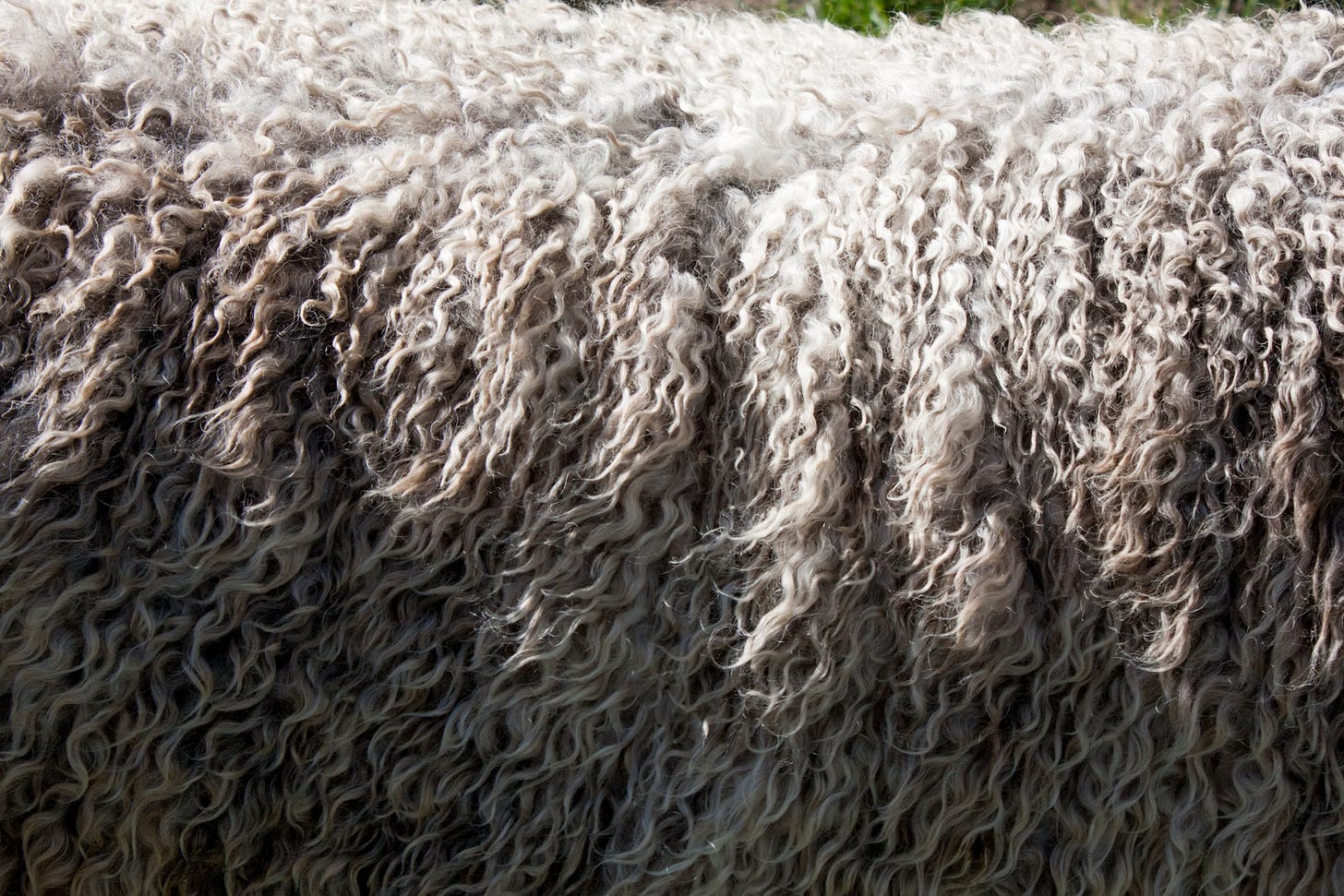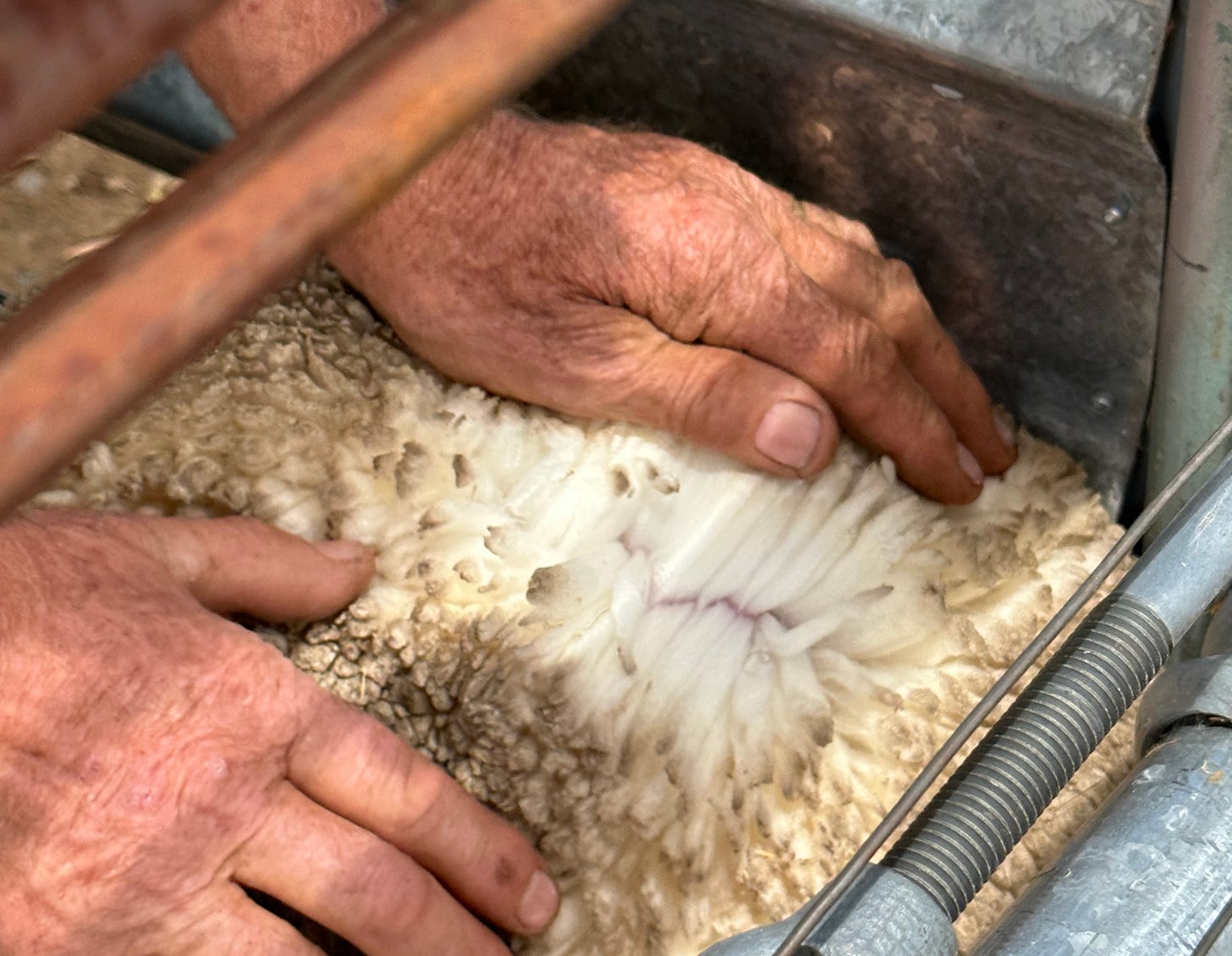Superwash wool - is it really that super?
Materials can undergo several treatments in different steps of the value chain to achieve certain characteristics. In this newsletter, we explore a treatment of the wool fiber known as superwash.
What is superwash wool?
Superwash wool is a wool that has been treated or processed in a way to be machine washable. It’s a process used to achieve felt-restistancy when machine washing it and more resistant to sudden temperature changes.
The superwash process was developed in the 1970’s when the demand for machine washable materials increased as the washing machines gained popularity. To compete with the new, machine washable synthetic fibres, such as polyester, the superwash technology was developed. The aim was to prevent the wool from felting and thereby shrinking when washed in a washing machine.
However, the superwash treatment process involves both environmental risks and takes away the natural, and incredible, properties of wool. Wool is a natural material that is biodegradable and 100% renewable. In addition, it is naturally wrinkle resistant, breathable, odour and stain resistant, naturally elastic and flame retardant.
The process
The most common treatment used for the superwash process is the ‘Chlorine-Hercosett’ process, which is employed in approximately 70% of all wool labelled as fully machine-washable. It involves two steps.
Firstly, the wool is immersed in large pools containing a water-based chlorine solution. From this chemical process, the tiny scales on the wool fibres are removed or reduced. After the chlorine bath, the wool is cleaned from the chlorine.
Secondly, the wool fibre is coated with a fine layer of polymer, a type of plastic, that keeps the scales from joining together and causing shrinkage. The most common plastic used for coating is called Hercosett 125, which is a water-resistant nylon-based polymer.
Downsides with superwash wool
Even though the superwash treatment can be argued to modify the wool to become more user-friendly, it imposes large environmental risks. For instance, large quantities of water are required and wastewater leaving the manufacturing plant can be contaminated. Wastewater with high concentrations of chlorine is dispersed in nature and is toxic for the surrounding communities, both human and animal life. Chlorine is a chemical with properties such as irritation to skin, may cause respiratory irritation and is very toxic to aquatic organisms.
From the superwash treatment, adsorbable organic halides (AOX), are released from both the chlorine and the Hercosett polymer. AOXs are toxins created when chlorine reacts with available carbon-based compounds. AOXs, just as chlorine, have a large environmental impact if they are released in nature, they are for instance toxic to aquatic organisms.
The superwash treatment also ruins the natural properties of the wool. As mentioned, the wool fibre has an ability to regulate temperature, absorb moisture and is naturally flame retardant. The plastic coating from the superwash treatment seals the wool fibres which prevents the absorption of moisture and natural wicking of body moisture, as well as removes the creation of air pockets, which keeps the heat locked in.
Alternatives to superwash treatment
There are a alternatives to the superwash treatment to modify the wool fibre. One alternative is the Naturetexx Plasma process, developed by the German company Südwollegroup. This process uses plasma, air and electricity instead of chemicals to modify the fibre surface. No chlorine is used in the process and no AOX pollutants are released.
Furthermore, enzymes can be used to modify or improve the characteristics of the wool fibre. An enzyme is a type of protein that acts as a biological catalyst, facilitating and accelerating chemical reactions without being consumed in the process. In the context of wool processing, enzymes are employed for various purposes, such as cleaning, finishing, and modifying the characteristics of wool fibres. Enzyme treatment is often considered as more sustainable than traditional treatment processes, such as superwash, as no chlorine or other chemicals are used and less energy is required. The Danish brand Dilling is an example of a brand that uses both the Naturetexx Plasma process and enzyme treatment on their wool garments.
Is it really 100% wool if it’s superwash treated?
As it’s not mandatory for brands to write on the care label which treatment a wool garment has undergone, it’s hard to estimate how common superwash wool is in the industry. For brands who manufacture wool garments, traceability in your supply chain is key to gain knowledge on the treatments of the wool yarn used in your wool garments. The EU strategy for Sustainable and Circular Textiles will require brands to have full traceability for garments, including a disclosure of all treatments the products have gone through. Disclosing this kind of information will be crucial in order for textiles to be safely recycled.
As a consumer, ask the brand if your wool knit has been treated with the superwash process. By shedding light to environmental risks of the superwash treatment, we can reduce the amount of toxic chemicals and plastic in the supply chain of our garments.
When knowing about superwash and its impact on the environment, human and animal life, would you want your wool garments to have this treatment?
Bergstrand Consultancy can help your company to transition from unintentionally causing harm to proactively doing good. We advise on textile materials from an environmental and animal welfare perspective. We can help optimise your supply chain by building a traceable and local wool value chain. Reach out to info@bergstrand.co to learn more.
Upcoming Newsletters
EU Legislations: Part 3. What is the Corporate Sustainability Reporting Directive (CSRD)?
Regenerative agriculture: What is regenerative farming and why is it important for fashion?
What we’re reading this month
The hidden plastics in our clothes – and how to avoid them: Most people know that polyester trousers are made of plastic. But, from labels to threads and zippers, it is lurking in many less obvious places too.
What We Can Learn From Renewcell’s Financial Struggles: “Why is the hopes of textile-to-textile recycling hinged on fashion brands in the Global North with other priorities, who procure products from the supply chain in the Global South?”
The Vogue Business AW24 size inclusivity report: After green shoots of progress last season, big brands fell down on body diversity for Autumn/Winter 2024.
European Fashion Alliance (EFA) leads industry reform: uniting for sustainable transformation and empowerment: Last week, the EFA convened its members and the fashion industry for the conference Status of the European Fashion Industry.
Mushroom leather? The future of fashion is closer than you think: Imagine disposing of an old pair of shoes by simply composting them.






